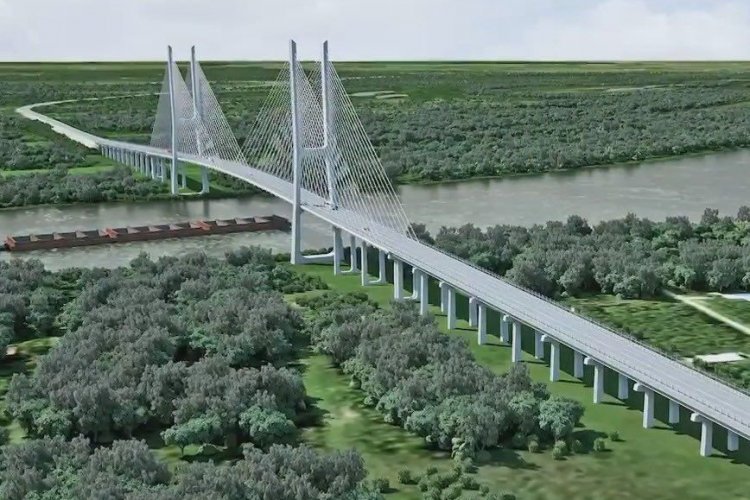The Bi-oceanic corridor that will link the center-west of Brazil with the Pacific ports in the north of Chile is taking shape, especially in Paraguay, a country where, with an estimated investment of US$450million, it is intended to build a 531-kilometer route.
Read also: Check out our coverage on Paraguay
The project -recognize sources from the latter country- is strategic to turn Paraguay into a logistics center in the center of the continent, competing in some way with the Panama Canal, which is where many of the exports leave from Mato Grosso do Sul, the Brazilian state that would benefit the most from the work.

Mato Grosso do Sul is key. With a population close to three million inhabitants in the center of Brazil, its economic activities are related to agribusiness, as wood pulp is one of its main exports, followed by soybeans, corn and meat. Of the order of 40% goes to China.
These products today are sent to Asia through the Atlantic, where they have to make a long journey from the ports by sea. As an example, if a ship from Brazil takes around 62 days to Japan, from Chilean ships the time is reduced by half.
It is estimated that the products will save the order of 8,000 kilometers of navigation to reach China, says a promotional video with which Paraguay shows the progress of the works.
According to sources close to the project, the corridor has a total of 1,925 kilometers and takes advantage of a series of routes that already connect Brazil, Argentina, Paraguay and Chile, to now build this road that will allow cargo to be taken from Mato Grosso do Sul.
BIOCEANIC BRIDGE, THE KEY WORK
The works of the routes have been tendered. A few weeks ago, the Paraguayan government received offers for the third section, Mariscal Estigarribia – Pozo Hondo, of about 220 kilometers.
As highlighted, this will complement the first section, between Carmelo Peralta and Loma Plata, which is already completed.
But without a doubt the work that draws the most attention is the construction of the international bridge that will link the cities of Carmelo Peralta and Puerto Murtinho in Brazil.
Last December, the contract was signed to build this 1,300-meter-long suspension bridge, which has a budget of about US$90 million and construction has already begun, which is in charge of a consortium made up of Cidade, Tecnoedil Constructora and Paulitec Constructors.
According to one of the latest progress reports, the project is already 8% complete, with the assembly of metal structures and the drilling of piles.
Paraguay has been very active in developing the corridor because, although it is not expected to have an immediate effect on increased cargo movement, the potential to attract investment is very high.
In fact, the progress of this work, which makes it possible to streamline the movement of cargo from the center of the continent, will be analyzed at a meeting to be held in the coming days in Antofagasta, a region in northern Chile that has the ports through which cargo products could leave.
With information from DFsud (Andrés Pozo B.)

